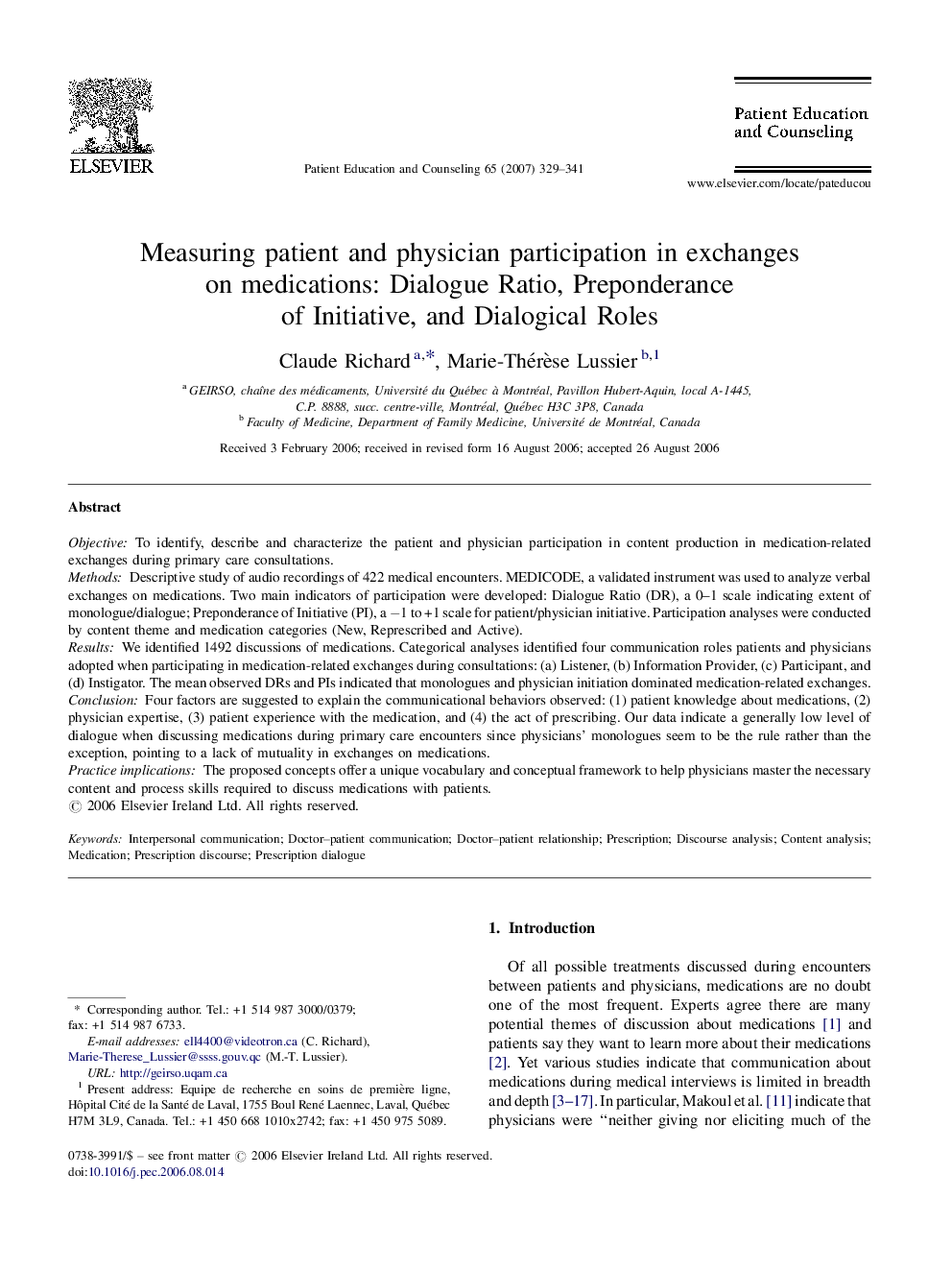| Article ID | Journal | Published Year | Pages | File Type |
|---|---|---|---|---|
| 3815294 | Patient Education and Counseling | 2007 | 13 Pages |
ObjectiveTo identify, describe and characterize the patient and physician participation in content production in medication-related exchanges during primary care consultations.MethodsDescriptive study of audio recordings of 422 medical encounters. MEDICODE, a validated instrument was used to analyze verbal exchanges on medications. Two main indicators of participation were developed: Dialogue Ratio (DR), a 0–1 scale indicating extent of monologue/dialogue; Preponderance of Initiative (PI), a −1 to +1 scale for patient/physician initiative. Participation analyses were conducted by content theme and medication categories (New, Represcribed and Active).ResultsWe identified 1492 discussions of medications. Categorical analyses identified four communication roles patients and physicians adopted when participating in medication-related exchanges during consultations: (a) Listener, (b) Information Provider, (c) Participant, and (d) Instigator. The mean observed DRs and PIs indicated that monologues and physician initiation dominated medication-related exchanges.ConclusionFour factors are suggested to explain the communicational behaviors observed: (1) patient knowledge about medications, (2) physician expertise, (3) patient experience with the medication, and (4) the act of prescribing. Our data indicate a generally low level of dialogue when discussing medications during primary care encounters since physicians’ monologues seem to be the rule rather than the exception, pointing to a lack of mutuality in exchanges on medications.Practice implicationsThe proposed concepts offer a unique vocabulary and conceptual framework to help physicians master the necessary content and process skills required to discuss medications with patients.
